University News
Rarely Blooming, Tropical 'Queen of Night' Opens in WIU's Malpass Library; Library Home to More Than 2,000 Plants
August 26, 2014
MACOMB, IL — As Western Illinois University students finished up their first full day of Opening Weekend activities last Friday, a few faculty and staff members from University Libraries stayed late on campus to watch the blooming of the "Queen of the Night." One of more than 2,000 plants in Western's Leslie F. Malpass Library, the Queen of the Night, or the Epiphyllum oxypetalum, rarely blooms—sometimes only once a year—and they wanted to witness the special occasion.
"The common name of the plant is 'Dutchman's Pipe' or 'Queen of the Night,'" explained Linda Zellmer, an associate professor at University Libraries. "Epiphyllum is a genus of the Orchid Cacti. For those who do not know Latin, 'Epi' means 'upon' and 'phyllum' means 'leaf.' The plant blossoms actually form on the edge of the plant's 'leaf.' According to the 'Encyclopedia of Horticulture,' it is native to the tropics from Mexico to Brazil, although other sources say Mexico, Guatemala and Honduras. I thought it only bloomed once a year, similar to the Night Blooming Cereus, which is also called 'Queen of the Night,' but they can bloom more than once a year," she added.
"In the wild, this plant prefers living high in the trees, but in Malpass, it seems to be happy root-bound in a container on the warmest floor, which is the sixth floor," University Libraries Nursery Worker Rebecca Fross explained. "The blooms appear on modified stems that look like wavy, flattened leaves. Flowering can begin when the plant is from 1-3 three years old, depending on the environment, and the Queen of the Night can live to be quite old. In its native habitat, at night, besides insects, bats will pollinate this plant. They are drawn to it by the smell and large, white flowers, and if it's pollinated, fruit will develop, and that fruit is edible."
According to Zellmer, last Friday was the second time a Queen of the Night plant, two of which are located in Malpass Library, bloomed this summer. She attributed the rare plants' blooming to Fross' tender care.
"Roughly, there are 72 genera and 112 includes species and cultivars represented in the plant collection in Malpass," Fross noted. "Most of the plants are tropical and prefer low light, but there are exceptions. Watering is done daily in the morning with the afternoon left to other duties such as pruning, propagating, arranging displays and general maintenance. Propagation is done in the library nursery, and currently there are more than 250-300 replacement plants."
In addition to the aesthetic appeal, Fross said, the greenery in the Malpass Library—an unusually designed building with many areas utilized for plant life—lend their leaves for both reduction in air and noise pollution in the building. Opened in 1978, the building's design is based on a pinwheel, according to University Archivist Jeff Hancks and WIU Alumnus Adam Carey in their book, "Western Illinois University" (part of Arcadia Publishing's "The Campus History Series").
"In 1975, funding was secured in Springfield, and the complicated work of constructing one of WIU's most architecturally unique buildings began. Donald Rezab, working with chief designer Gyo Obata of Japan, came up with the unique pinwheel design for the library," Hancks and Carey explain on page 89. "The new university library was a vast improvement over previous libraries, with modern technologies and plenty of space for student collaboration. The…facility had shelf space for over a million books, a stunning atrium with countless plants, a massive skylight with a large hanging sculpture, a glass garden lounge and a bright glass area formerly housing the International Tea Room, now the Illinois Centennial Honors College."
Hancks and Carey also noted, "For the first 20-plus years of its operation, the building was simply known as the 'university library.' In 2001, the building was renamed in honor of long-serving president Leslie F. Malpass.'" (p. 89)
To download a PowerPoint presentation of the Queen of the Night's blooming, visit
http://faculty.wiu.edu/LR-Zellmer/Epiphyllum.pptx. (For users who don't have PowerPoint, you can view as a PDF at http://faculty.wiu.edu/LR-Zellmer/Epiphyllum.pdf.)
To visit, or to get more information about, the Queen of the Night, contact Zellmer at (309) 298-2723 or via email at LR-Zellmer@wiu.edu. For more about plant life in WIU's Malpass Library, contact Fross at (309) 298-2730 or via email at RR-Fross@wiu.edu.
Posted By: Teresa Koltzenburg (WIUNews@wiu.edu)
Office of University Communications & Marketing

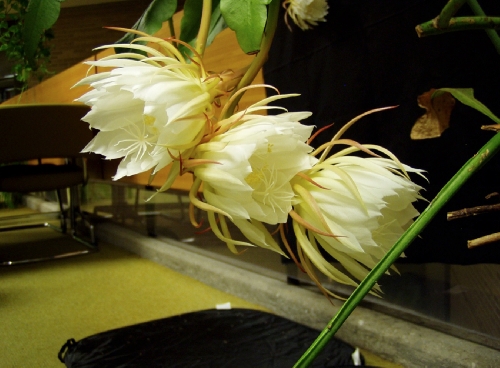
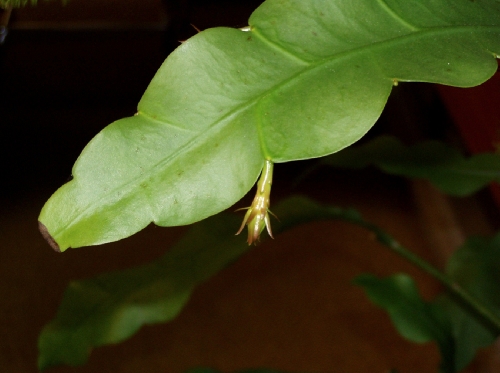
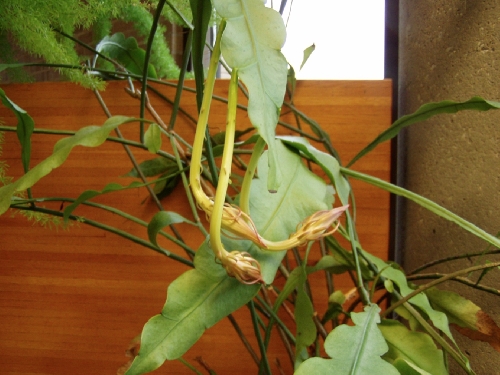
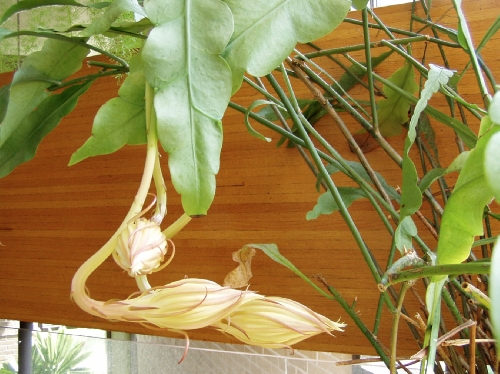
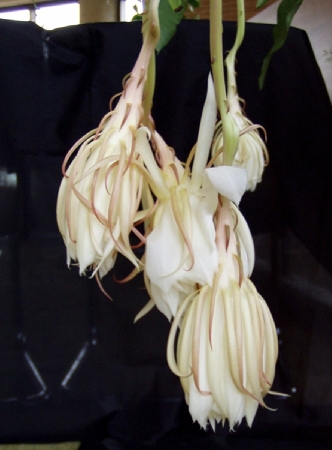
Connect with us: